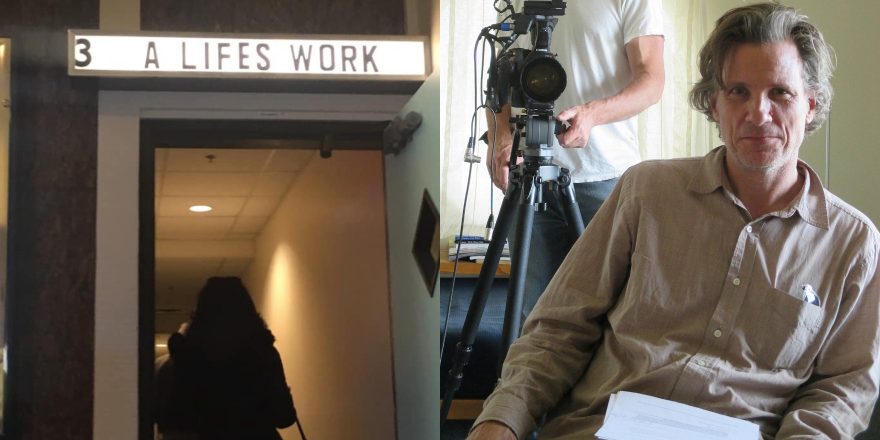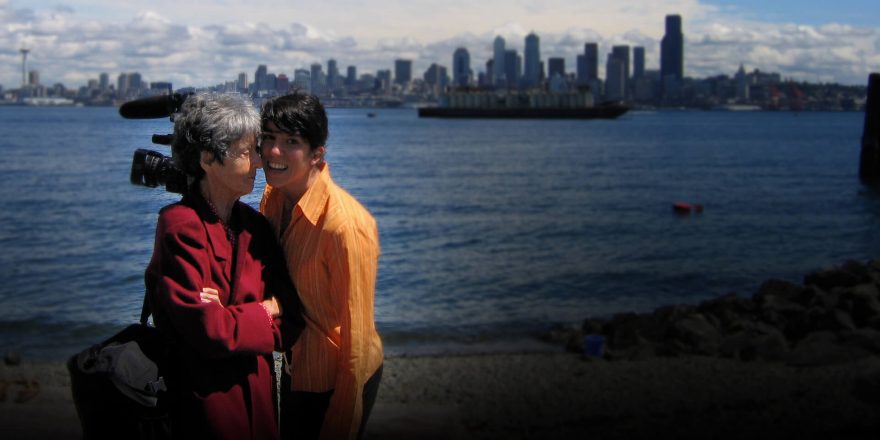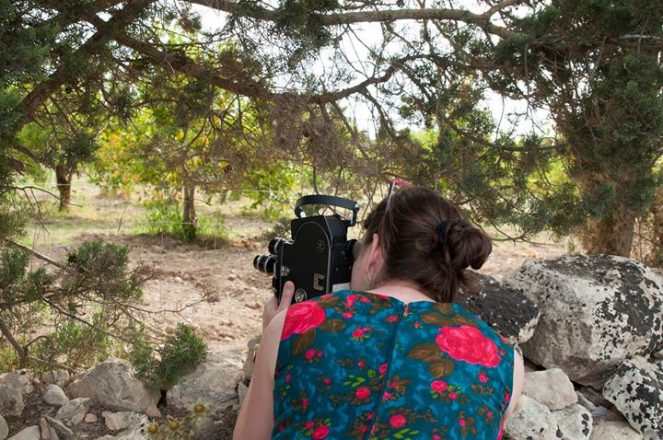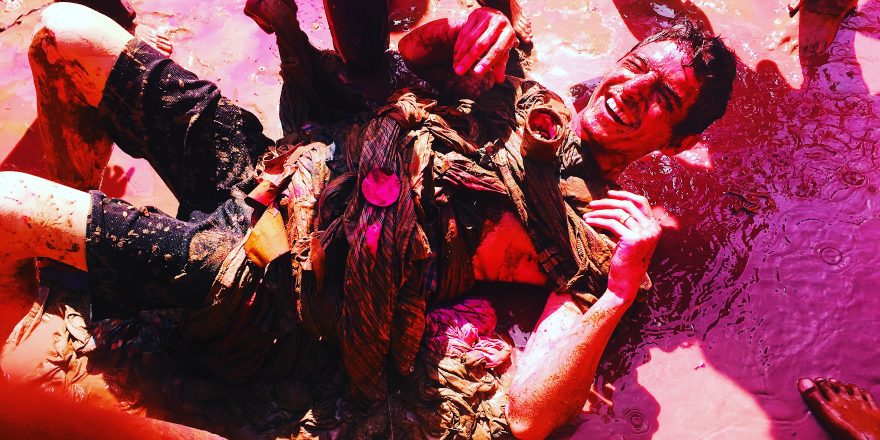Sometime in 2005, I told Wolfgang Held, a D.P. I had worked with on my previous film, about an idea for a new project that wouldn’t leave me alone.
“It’s a feature documentary,” I said, “about people working on things they won’t complete in their lifetime.”
“Hmmm, that’s interesting,” he said in his German accent. “What kind of things?”
“Like a scientist who is searching for a breakthrough. An architect or a builder constructing something massive. A collector looking for his passion’s holy grail. Maybe someone doing something in nature, like a steward of a forest.”
“Do you have people in mind?” he asked.
I did. I was just waiting for someone I respected and trusted to tell me the idea could be turned into a good film and could be done on a micro-budget.
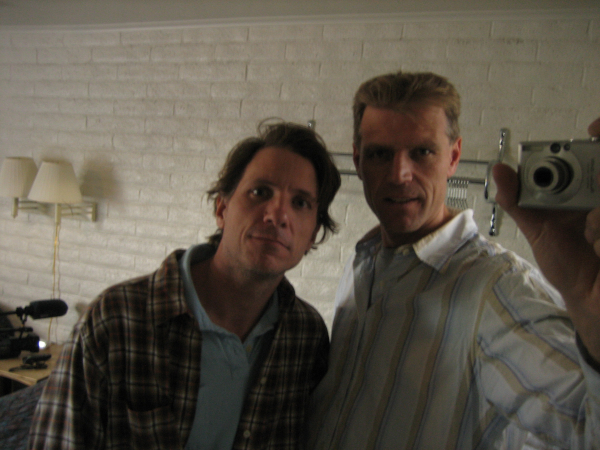
My first subject was Paolo Soleri, an architect and one time apprentice to Frank Lloyd Wright. Since 1970, Soleri had been the guiding force behind an experimental city in the Sonoran desert – Arcosanti – based on his theories of urban planning. The second person to agree to be in the film was Jill Tarter, the Director of the SETI Institute, who has been involved in the scientific search for extraterrestrial intelligence since the mid-1970s, and who was the basis for the Ellie Arroway character in Carl Sagan’s science-fiction novel Contact. Next, I contacted David and Jared Milarch, father and son tree farmers and co-founders of the Champion Tree Project (recently renamed Archangel Ancient Tree Archive), who clone old-growth trees to combat climate change. Finally, I connected with Robert Darden, a journalism professor at Baylor University who founded the Black Gospel Music Restoration Project, an organization that is trying to identify, preserve, digitize, and catalog all of the most at-risk recordings from the black gospel music tradition.
When the occasional friend I told about the film said it sounded depressing, I would explain that it wasn’t about failure and death, but about devotion to something larger than the self and legacy. When other friends told me, “That sounds like me and my garage,” we’d laugh and I’d say, “Exactly!” A Life’s Work was about how you were going to leave your (literal and/or metaphorical) garage when you slipped into the Great Unknown. Did you intend to let it fall into a state of chaos or decrepitude, expecting your family members to clean up after you? Or were you going to maintain it so it served its purpose as a shelter and workplace, leaving it so the next generation could enter it and say, “This will be a good place to start my work”?
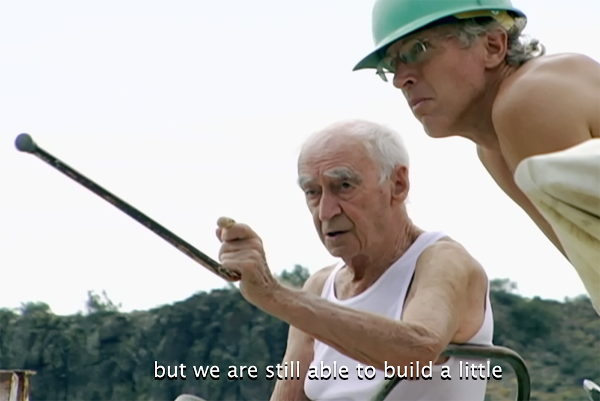
Sometime after the fifth year of production, when I mentioned the film to some people, they would half-jokingly ask me, “Will you finish it in your lifetime?”
The first few times, it was funny, but it soon lost its charm. After about the twelfth time I heard it, I would say, “Did you ever see The Agony and the Ecstasy, the film where Charlton Heston plays Michelangelo and he is constantly nagged by the Pope, who wants to know when he’ll finish the Sistine Chapel? The Pope asks, ‘When will you make an end?’ And Heston, puffing out his chest, standing on a scaffold, looking down on the Pope as if he were an insect, says, ‘When I am finished.’”
But why was it taking so long? For a start, money, or the lack of. I received a couple of small grants, but for the most part I funded production by paying for a shoot or two, claiming those expenses on my taxes, receiving a refund, and then using that money to do another shoot or two. It was inefficient and constrained the number of shoots I could organize per year, but I couldn’t afford to do it another way. It worked until production was over. I still needed to find money for post, though, which ultimately I got through a crowdfunding campaign and the largesse of a producer.
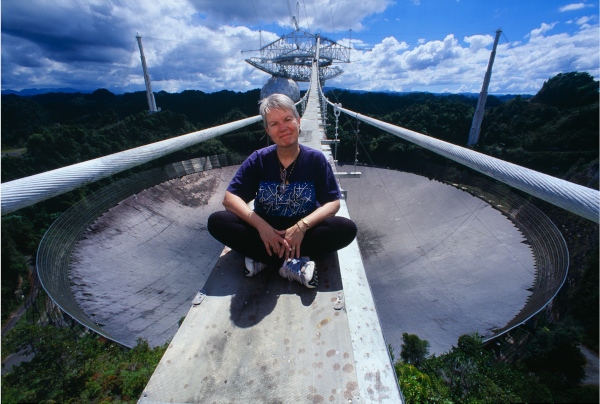
In the early days, I thought A Life’s Work would take about three years to complete. As the years passed, I was often frustrated by the lack of backing, but once we shot three of the four subjects, I was confident I would finish the film. Not in three years, but I’d finish it. However, what puzzled me for quite a while was how to end a film about things that had no ending.
In the winter of 2008, one day between Christmas and New Year’s Eve, I thought I had come up with the perfect ending. When I woke up that morning, the room was spinning wildly. I found some relief when I laid on my left side, but otherwise, even with my eyes closed and a cool, damp facecloth over them, the vertigo was unrelenting. It was unlike anything I had experienced before.
By the afternoon, I felt stable enough to get out of bed and walk to the bathroom, though I needed to use the walls for support. I went to my desk and used WebMD’s symptom checker search. Of the 10 possible conditions, the one I focused on was cerebral thrombosis, a life-threatening condition that results in death in 30 percent of cases.
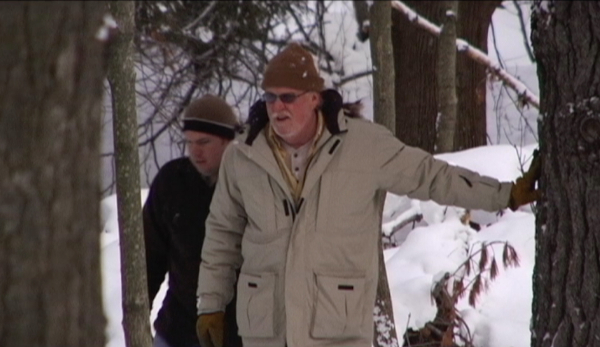
I didn’t take it too seriously, but I resolved to visit my doctor if I wasn’t feeling somewhat normal the next morning.
By the evening, the dizziness had abated a bit. I was able to sit in a dimly lit room and listen to the radio. I managed to hold down a bagel, but still had to brace myself against the walls to find my way to the kitchen and back to bed.
That night, I managed to fall asleep, but woke up around 3 a.m. The nausea and dizziness were as bad as the night before.
“I can’t have a cerebral whatever,” I thought. “I can’t. I have to finish the film. I have to finish the short story collection. I have to bike through Italy, south to north. I have another film in me. At least one.”
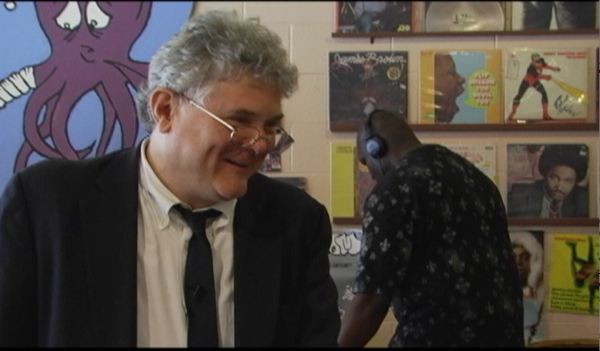
After a few minutes of existential dread, the worry transformed into fantasy. If I have this, I can include myself in the film — something I’d been strongly averse to. The illness would give it incredible tension and drama. Would I finish the film or would I die before crossing the finish line, my perishing captured by the camera? I had my ending. My lord, what an ending that would be! What would the final image be? I began thinking about how to cut my imminent demise into A Life’s Work. Oh, the irony!
I woke up feeling better, but not great. I went to my doctor and told her my symptoms. She had me do some hand-eye coordination tests. “Don’t worry,” she said, “It’s BPPV. Benign Paroxysmal Positional Vertigo. ‘Benign’ being the keyword.”
Oh.
The Pacific Neuroscience Institute defines the condition as “a mechanical problem in the inner ear. It occurs when some of the calcium carbonate becomes dislodged and migrates into one or more of the three fluid-filled semicircular canals. These crystals interfere with the normal fluid movement that these canals use to sense head motion, causing the inner ear to send false signals to the brain. This causes brief but severe spinning sensations with movement.”
“I’ll give you some exercises to do,” she said. “They’ll make the ear rocks” – what she called the calcium carbonate crystals – “move out of your inner ear.”
I still didn’t have an ending.
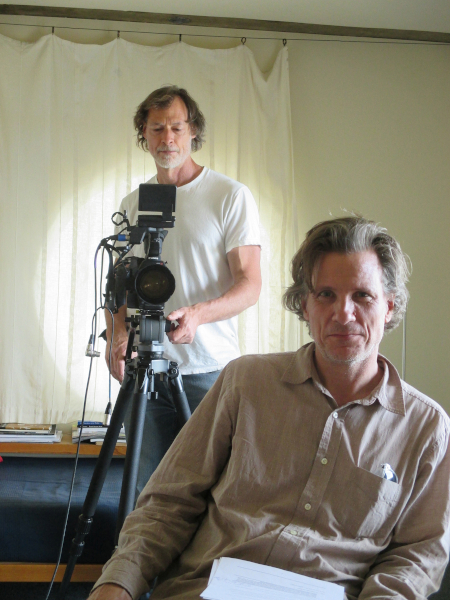
In May 2011, I announced on my blog that production was over. I must have had an inkling of an ending, but I don’t remember it, probably because two months later I received a press release from Arcosanti with this quote from Soleri: “There are other things that I want to accomplish. I am ready to leave the management of the Foundation and its primary project – the urban laboratory Arcosanti – to the next generation.”
Andy Bowley, the other D.P. that worked on the film, dusted off the camera and we conducted an interview in New York City with the next generation, architect Jeff Stein, who began his apprenticeship under Soleri in 1975. I had the ending. The film would come full circle, the apprentice taking over from the master. This was what the film was about, being part of a continuum. From Wright to Soleri to Stein. Perfect.
After that shoot, I declared production over and began editing Stein into the film.
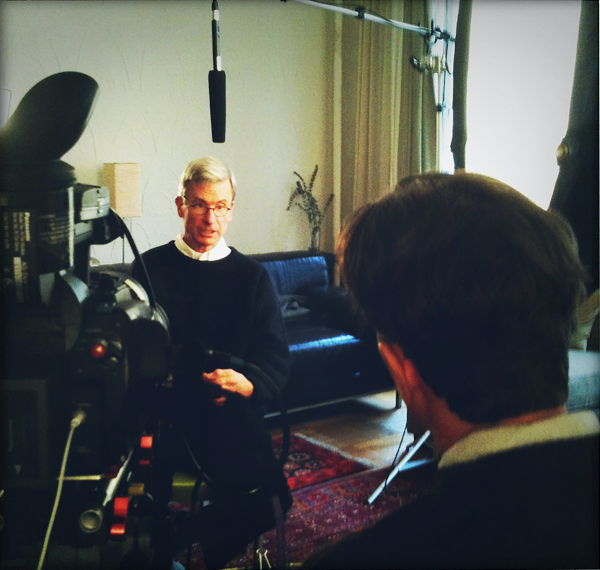
In 2013, Soleri died. Awash in an array of emotions, I decided we must go to Arcosanti. Andy and I flew out to Arizona and interviewed Stein in his Arcosanti apartment, a space Stein designed while doing his apprenticeship, where Soleri had lived for so many years, where we shot one of the last interviews he gave, where Jeff now resided when he was on site. We used a drone for the first time. We took different cameras and lenses and used a different palette to show the beginning of a new cycle.
Production was over. Nothing could happen that would make production start up again. No more shooting. For real. Postproduction was slow. I’m a deliberate editor to begin with, and add to that my need for a day job to pay the rent and raise the final chunk of money for the many expensive post services … Before I knew it, it was 2020.
I never expected A Life’s Work would take 15 years to complete. Had I known that at the start, would I have made the film? Probably not. But being married to the film for one-quarter of my life made me realize a few things. First, all of those years gave me a lot of time to think, to consider and reconsider how to approach creative questions as big as how to structure an essentially plotless film, and as small as the fine mechanics of how long to linger on a shot or exit a scene.
Second, I realized that I shared, or maybe absorbed, some significant traits with the four subjects: patience, level-headedness, and an emotional baseline firmly set in a place where bacchanalian highs and crushing lows didn’t derail us.
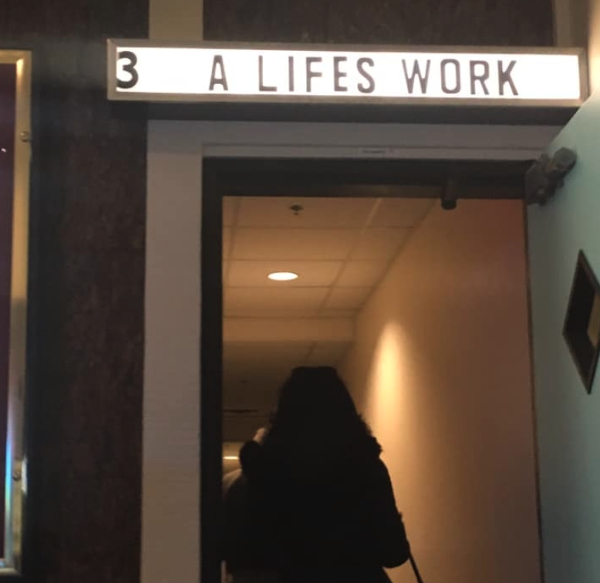
However, there were still plenty of times over the years when I wondered what I had gotten myself into, when I couldn’t see how I could finish A Life’s Work or when I feared if I did finish, the film was destined to fail. There were too many times when a foundation or festival’s rejection made me believe I was making a film no one would want to see. Those were the dark days. And maybe they were more frequent and more severe and lasted longer than the times when I felt like I was in Groundhog Day, but thankfully I managed to work through them.
When I asked Jill Tarter how the SETI Institute measured success, she said, “I think if my colleagues and I got out of bed every morning and said, ‘Today we’re going to get a signal!’, we’d probably go to bed every night disappointed. So we get out of bed in the morning with the idea that we’re going to use what we’ve learned yesterday to make the search better, to have a higher probability of succeeding.” It’s one of my favorite moments in the film.
Lastly, the passing of all those years working on the film meant I had the opportunity to capture the many changes and milestones each subject and their projects experienced. I was capturing the passage of time, something I could not have done if things had gone as I originally thought they would.
All images courtesy David Licata.



